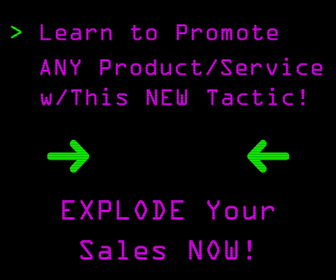 Business plans can help both established companies, new work at home businesses, and the like perform a variety of tasks both for those coming up with an idea and those who read over it. Many entrepreneurs use them to discuss their company’s vision to potential investors. They may also develop a business plan for a firm, suppliers, potential prospects, or just to practice putting one together to learn more about managing a business. You may be wondering what’s included in a business plan and what types of methods there are. Many factors go into developing a high-quality business plan, and we discuss many of them in this article.
Business plans can help both established companies, new work at home businesses, and the like perform a variety of tasks both for those coming up with an idea and those who read over it. Many entrepreneurs use them to discuss their company’s vision to potential investors. They may also develop a business plan for a firm, suppliers, potential prospects, or just to practice putting one together to learn more about managing a business. You may be wondering what’s included in a business plan and what types of methods there are. Many factors go into developing a high-quality business plan, and we discuss many of them in this article.
How do you know you need a business plan? Well, not only is a business plan a good idea for a variety of businesses, in particular, it’s something that startups can benefit from, according to Entrepreneur.
Startups. The classic business plan writer is an entrepreneur seeking funds to help start a new venture. Many, many great companies had their starts on paper, in the form of a plan that was used to convince investors to put up the capital necessary to get them under way.
Most books on business planning seem to be aimed at these startup business owners. There's one good reason for that: As the least experienced of the potential plan writers, they're probably most appreciative of the guidance. However, it's a mistake to think that only cash-starved startups need business plans. Business owners find plans useful at all stages of their companies' existence, whether they're seeking financing or trying to figure out how to invest a surplus.
Entrepreneur also discusses what the three primary parts of a business plan are:
A good business plan follows generally accepted guidelines for both form and content. There are three primary parts to a business plan:
The first is the business concept, where you discuss the industry, your business structure, your particular product or service, and how you plan to make your business a success.
The second is the marketplace section, in which you describe and analyze potential customers: who and where they are, what makes them buy and so on. Here, you also describe the competition and how you'll position yourself to beat it.
Finally, the financial section contains your income and cash flow statement, balance sheet and other financial ratios, such as break-even analyses. This part may require help from your accountant and a good spreadsheet software program.
It’s hard to know where to start when developing a business plan. It may seem overwhelming. Inc. offers some great suggestions on where to start and how not to feel overwhelmed.
So where do you start? Focus on the basics first:
Identify your industry: Retail, wholesale, service, manufacturing, etc. Clearly define your type of business.
Identify your customer. You cannot market and sell to customers until you know who they are.
Explain the problem you solve. Successful businesses create customer value by solving problems. In our rental example, one problem is cycling enthusiasts who don't–or can't–travel with bikes. Another problem is casual cyclists who can't–or choose not to–spend significant sums on their own bikes. The rental shop will solve that problem by offering a lower-cost and convenient alternative.
Show how you will solve that problem. Our rental shop will offer better prices and enhanced services like remote deliveries, off-hours equipment returns, and online reservations.
If you are still stuck, try answering these questions. Some may pertain to you; others may not.
Who is my average customer? Who am I targeting? (Unless you plan to open a grocery store, you should be unlikely to answer, “Everyone!”)
What problem do I solve for my customers?
How will I solve that problem?
Where will I fail to solve a customer problem… and what can I do to overcome that issue? (In our rental example, one problem is a potential lack of convenience; we will overcome that issue by offering online reservations, on-resort deliveries, and drive-up equipment returns.)
Where will I locate my business?
What products, services, and equipment do I need to run my business?
What skills do my employees need, and how many do I need?
How will I beat my competition?
How can I differentiate myself from my competition in the eyes of my customers? (You can have a great plan to beat your competition but you also must win the perception battle among your customers. If customers don't feel you are different… then you aren't truly different. Perception is critical.)
As for developing a more specific plan, there are many types of business plans to select from. For starters, The Balance discusses two basic plans to consider. They also mention why it's important to write the business plan on your own so you can gain insight and knowledge on the topic.
There are two types of business plans, formal or informal. If you seek funding, banks or investors will require a formal business plan of 10-30 pages (I promise, you can quickly fill up those pages).
A formal business plan adheres to the traditional business plan outline and typically requires a more substantial financial section.
An informal business plan is usually for internal purposes and does not need to follow the traditional business outline as stringently. My recommendation for a small business interested in creating a simple and informal business plan? Touch on all the sections in the business plan outline, but especially focus on the marketing analysis, SWOT analysis and marketing plan section.Where possible, I strongly suggest trying to write the business plan on your own, at least a first draft. Not participating in this process could rob you of the knowledge and insight you’d gain during the research and compilation phase. If seeking outside funding, you may want to seek outside help. This could ensure each section is covered properly and increase your chances of getting funding. Whether you decide to write the business plan in its entirety or not, make sure and recruit some help to review and proofread your final document.
Here are some additional business plans to mull over, which Entrepreneur explains in detail below.
The Miniplan. A miniplan may consist of one to 10 pages and should include at least cursory attention to such key matters as business concept, financing needs, marketing plan and financial statements, especially cash flow, income projection and balance sheet. It's a great way to quickly test a business concept or measure the interest of a potential partner or minor investor. It can also serve as a valuable prelude to a full-length plan later on.
Be careful about misusing a miniplan. It's not intended to substitute for a full-length plan. If you send a miniplan to an investor who's looking for a comprehensive one, you're only going to look foolish.
The Working Plan. A working plan is a tool to be used to operate your business. It has to be long on detail but may be short on presentation. As with a miniplan, you can probably afford a somewhat higher degree of candor and informality when preparing a working plan.
We touched on this throughout the article, but Reuters provides some excellent arguments on why business plans are useful and how you can use them to your advantage. A few tools mentioned below are a management and planning tool.
A business plan is a tool with three basic purposes: communication, management, and planning. As a communication tool, it is used to attract investment capital, secure loans, convince workers to hire on, and assist in attracting strategic business partners. The development of a comprehensive business plan shows whether or not a business has the potential to make a profit. It requires a realistic look at almost every phase of business and allows you to show that you have worked out all the problems and decided on potential alternatives before actually launching your business.
As a management tool, the business plan helps you track, monitor and evaluate your progress.As a planning tool, the business plan guides you through the various phases of your business.
Some people feel business plans aren’t that beneficial, such as Money Crashers. Why is this the case? What they have to say is good food for thought as you consider what a good fit for your business is.
If you’re looking to make some extra money on the side by starting your own business (even while working another job), don’t get caught up in all the hype about developing an elaborate, complicated business plan. While writing a small business plan can certainly help, it’s no guarantee of success.
Instead, Money Crashers argues that a small business should focus on their product or service, rather than put together a detailed plan. Whether you agree with this or not, it’s something to consider when developing a new business or working on your existing one.
The first thing you need to clarify before starting your own business is what product or service you’re offering. It doesn’t have to be an amazing new technology or service that no one else is providing. Those things can work well in some cases, but it’s also possible that the reason no one is offering the product or service you’re thinking of is because there is no demand for it!
Think about your strengths, skills, and hobbies. What are you good at right now? These skills might be related to your current job, but they don’t have to be. If you plan on capitalizing on these skills, they should be something you actually enjoy doing because you’ll be giving quite a bit of free time to your side business. If you make yourself miserable doing something you hate, you’re not likely to stick with it for long. However, if you just need the extra money for a short time, loving the idea isn’t a necessity – it just needs to be something for which people will pay you
Sources: Entrepreneur, The Balance Small Business, Money Crashers, Inc., Reuters
CHALLENGE Yourself to Profit!
Free Download: Build Your Profit-Generating Online Business With This Free Blueprint
Sign Up, follow the easy steps and You'll get the tactics, strategies & techniques needed to create your online profit stream. It's free!



